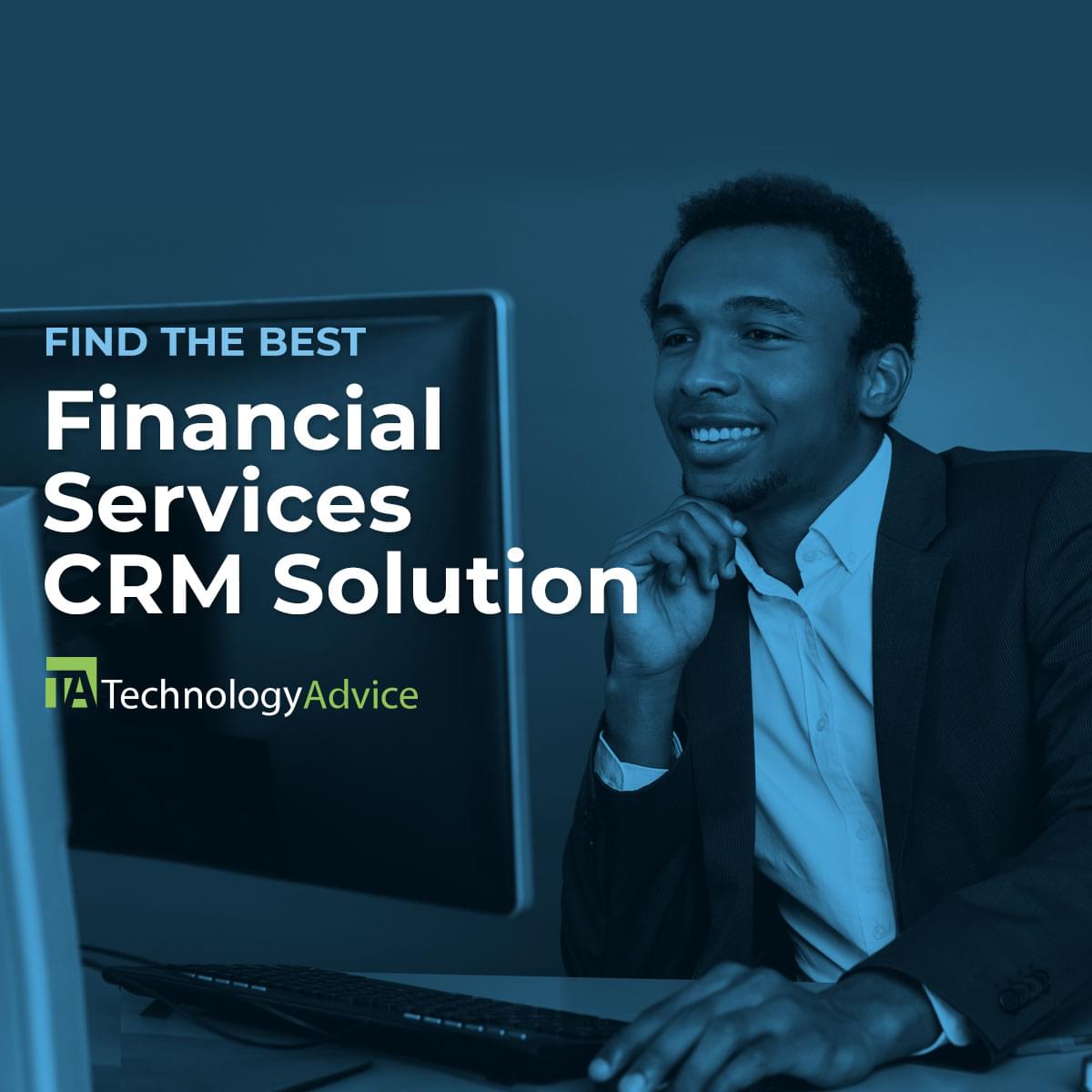Best CRM for financial services is a critical consideration for firms of all sizes, from small advisory practices to multinational banks. The right CRM system can streamline operations, improve client relationships, and enhance compliance. This exploration delves into the key features, leading platforms, and implementation strategies for optimizing CRM usage within the financial sector, ultimately driving efficiency and growth.
We will examine the diverse needs of different financial institutions, comparing leading CRM platforms like Salesforce Financial Services Cloud and Microsoft Dynamics 365 for Finance, and highlighting their strengths and weaknesses. The discussion will also cover crucial aspects like data security, regulatory compliance, and user adoption, providing a comprehensive guide for selecting and implementing the ideal CRM solution.
Defining Needs in Financial Services CRM
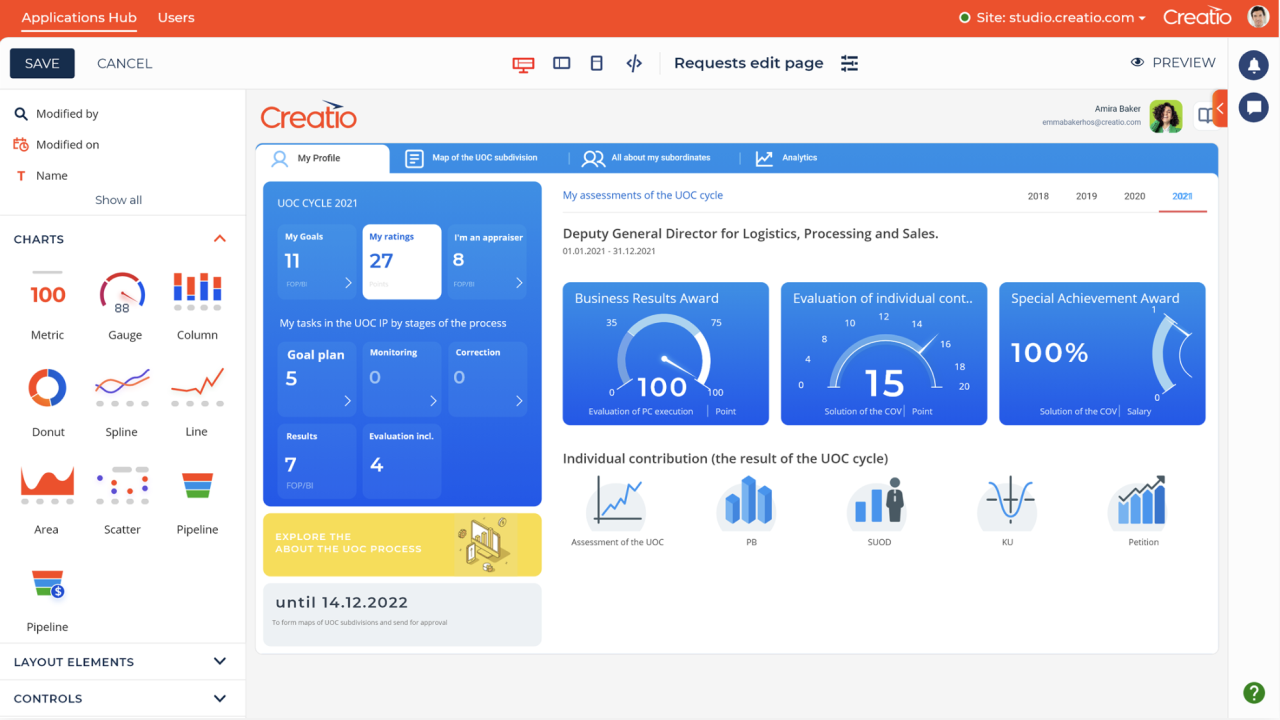
Choosing the right CRM is crucial for financial services firms of all sizes. The complexity and regulatory demands of the industry necessitate a system that not only manages client relationships but also ensures compliance and enhances operational efficiency. The specific needs, however, vary significantly depending on the institution’s size, structure, and services offered.
A well-chosen CRM system can streamline workflows, improve client service, and ultimately boost profitability. Understanding the specific features and functionalities required is the first step towards making an informed decision. This requires a careful assessment of the organization’s current processes, future goals, and the unique challenges faced within the financial services sector.
Essential CRM Features by Department in Financial Services
The following table Artikels essential CRM features categorized by department, highlighting their importance and justification. The level of importance is subjective and may vary based on the specific organization and its strategic priorities.
| Department | Feature | Importance | Justification |
|---|---|---|---|
| Wealth Management | Client Portfolio Tracking | High | Essential for monitoring investment performance, asset allocation, and risk management. |
| Wealth Management | Goal Setting and Progress Tracking | High | Facilitates personalized financial planning and demonstrates value to clients. |
| Investment Banking | Deal Management | High | Streamlines the entire deal lifecycle, from origination to closing. |
| Investment Banking | Regulatory Compliance Tracking | High | Ensures adherence to complex financial regulations and minimizes legal risks. |
| Insurance | Policy Management | High | Centralizes policy information, simplifies renewals, and improves customer service. |
| Insurance | Claims Management | High | Streamlines the claims process, reduces processing time, and improves client satisfaction. |
| All Departments | Secure Communication & Data Encryption | High | Protects sensitive client data and ensures compliance with data privacy regulations. |
| All Departments | Reporting and Analytics | Medium | Provides insights into sales performance, client behavior, and overall business trends. |
| All Departments | Integration with other systems | Medium | Seamless data flow between CRM and other business applications (e.g., accounting, trading platforms). |
CRM Requirements: Small Firms vs. Large Banks
The scale of operations significantly influences CRM needs. Small firms and large multinational banks have vastly different requirements.
- Small Financial Advisory Firms: Focus on personalized client service; require simpler, more affordable CRM solutions with strong client communication features; integration with accounting software is crucial; robust reporting might be less critical than client interaction tools.
- Large Multinational Banks: Need highly scalable and customizable CRM solutions; complex features for managing large client portfolios and diverse product offerings; strict regulatory compliance requirements; advanced analytics and reporting capabilities are essential; integration with multiple internal systems and external data sources is critical.
Hypothetical Client Profile: Financial Services CRM
Let’s consider a hypothetical client: “Apex Wealth Management,” a mid-sized firm specializing in high-net-worth individuals. Their needs and pain points illustrate the challenges faced by many financial institutions.
Needs: Apex needs a CRM to consolidate client data from multiple sources (existing spreadsheets, legacy systems), streamline client communication, track investment performance, and improve client onboarding. They also need reporting capabilities to monitor key performance indicators (KPIs) like client acquisition cost and asset under management (AUM) growth. Compliance with regulatory requirements is paramount.
Pain Points: Currently, Apex relies on disparate systems, leading to data silos and inefficiencies. Client communication is fragmented, and tracking client interactions is challenging. Generating reports requires manual data entry, which is time-consuming and error-prone. They lack a centralized view of their clients’ financial profiles and investment strategies.
Top CRM Platforms for Financial Services
Choosing the right CRM is crucial for financial institutions to manage client relationships effectively, streamline operations, and comply with stringent regulations. This section compares three leading CRM platforms tailored for the financial services industry, highlighting their key features, pricing models, target markets, integration capabilities, and security features.
Comparison of Leading CRM Platforms, Best crm for financial services
The selection of a CRM system depends heavily on the specific needs and size of the financial institution. Below is a comparison of three prominent platforms, offering a range of functionalities and pricing structures to cater to diverse requirements.
| Platform | Key Features | Pricing | Target Market |
|---|---|---|---|
| Salesforce Financial Services Cloud | Client 360 view, wealth management tools, regulatory compliance features, robust reporting and analytics, seamless integration with other Salesforce products. | Subscription-based, varying by features and number of users. Pricing typically starts at several hundred dollars per user per month. | Large financial institutions, wealth management firms, insurance companies, and banks requiring comprehensive solutions and advanced analytics. |
| Microsoft Dynamics 365 for Finance | Integrated financial management capabilities, customer relationship management, supply chain management, project service automation, and business intelligence tools. Strong emphasis on operational efficiency. | Subscription-based, with various licensing options and pricing tiers. Pricing depends on the modules selected and the number of users. | Mid-sized to large financial institutions seeking an integrated platform for both operational and CRM needs. |
| Adobe Workfront (previously known as Workfront) | Project and portfolio management capabilities, robust workflow automation, centralized collaboration tools, real-time reporting and dashboards, and integration with various other business applications. While not strictly a CRM, its project management strength makes it ideal for managing complex financial projects and client deliverables, complementing a core CRM. | Subscription-based, with varying plans depending on the number of users and features required. Pricing typically starts at a few hundred dollars per month. | Financial institutions needing strong project management capabilities alongside their CRM, particularly useful for managing complex financial projects, regulatory compliance initiatives, and client onboarding. |
Integration Capabilities with Fintech Solutions
Seamless integration with other fintech solutions is paramount for modern financial services CRMs. The platforms discussed offer varying levels of integration capabilities.
The ability to integrate with fintech solutions enhances efficiency and improves the overall client experience.
- Salesforce Financial Services Cloud: Integrates with a wide range of fintech solutions through its AppExchange marketplace, including payment gateways, robo-advisors, and digital lending platforms. This allows for a highly customizable and extensible ecosystem.
- Microsoft Dynamics 365 for Finance: Offers robust integration capabilities through its APIs and connectors, enabling connectivity with various fintech solutions. Integration can be achieved using custom development or through pre-built connectors available from Microsoft or third-party providers.
- Adobe Workfront: Integrates with various project management and collaboration tools, often used in conjunction with a core CRM to manage complex financial projects and client deliverables. This ensures streamlined workflows and enhanced communication between teams and clients. Integrations with other systems might require custom development or third-party tools.
Security and Compliance Features
Security and compliance are critical considerations for financial institutions. These platforms incorporate various features to meet stringent regulatory requirements.
Robust security and compliance features are essential to protect sensitive client data and ensure adherence to regulations such as GDPR and CCPA.
- Salesforce Financial Services Cloud: Complies with various industry regulations, including GDPR and CCPA, offering features like data encryption, access controls, and audit trails. Salesforce regularly updates its security protocols to address emerging threats.
- Microsoft Dynamics 365 for Finance: Provides strong security features, including data encryption, role-based access control, and audit trails. Microsoft also adheres to various industry regulations and regularly updates its security infrastructure.
- Adobe Workfront: Offers security features including data encryption, access controls, and audit trails, designed to meet industry security standards. Specific compliance certifications may vary and should be verified directly with Adobe.
Implementation and Customization
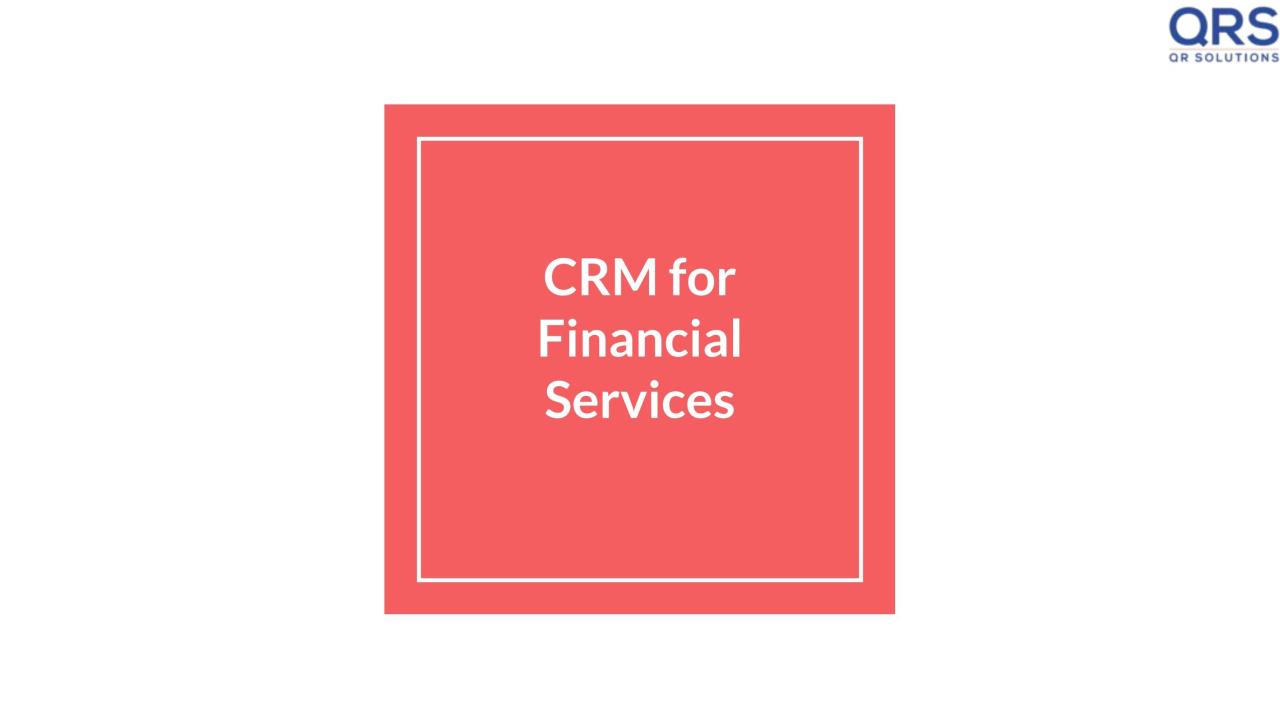
Implementing a CRM system within a financial institution is a significant undertaking, requiring careful planning and execution. Success hinges on a well-defined strategy that addresses both technical integration and the cultural shift needed to fully utilize the system’s capabilities. This involves understanding the institution’s unique needs, selecting the appropriate CRM, and then managing the implementation and ongoing customization effectively.
The process encompasses several key phases, each with its own set of challenges and considerations. A phased approach minimizes disruption and allows for iterative improvements based on feedback and evolving needs. Thorough project management is crucial to ensure timely and successful deployment.
Implementation Timeline and Resource Requirements
The timeline for CRM implementation varies significantly depending on the size and complexity of the financial institution, the chosen CRM platform, and the scope of customization required. Smaller institutions might complete the process within a few months, while larger, more complex organizations could take a year or more. Resource allocation includes dedicated project managers, IT specialists, CRM consultants, and end-user training resources.
- Project Initiation and Planning: This phase involves defining project goals, selecting a CRM vendor, and establishing a project timeline and budget. Key considerations include stakeholder buy-in, data migration strategy, and risk assessment.
- System Configuration and Customization: This stage focuses on configuring the CRM to meet specific business needs, including workflows, security settings, and data fields. Customization may involve developing custom integrations or reports.
- Data Migration: This crucial step involves transferring existing customer data from legacy systems to the new CRM. Data cleansing and validation are essential to ensure data accuracy and integrity. This often requires specialized tools and expertise.
- Testing and User Acceptance Testing (UAT): Rigorous testing is critical to identify and resolve any issues before full deployment. UAT involves end-users testing the system to ensure it meets their needs and works as expected.
- Training and Go-Live: Comprehensive training for end-users is vital for successful adoption. A phased rollout may be necessary to minimize disruption and allow for adjustments based on feedback.
- Post-Implementation Support and Maintenance: Ongoing support and maintenance are essential to address any issues that arise and to ensure the CRM continues to meet evolving business needs. This includes regular updates, system monitoring, and user support.
CRM Customization for Financial Services
Customizing a CRM to meet the specific needs of a financial institution often involves tailoring workflows, reports, and integrations to comply with regulatory requirements and enhance operational efficiency. This might involve developing custom modules for specific financial products or integrating with regulatory reporting systems.
Workflow automation is a key aspect of CRM customization in financial services. Automating tasks such as client onboarding, loan processing, and compliance checks can significantly improve efficiency and reduce operational costs. For example, automating the KYC (Know Your Customer) process can significantly reduce manual effort and improve compliance.
Customized reporting is crucial for generating insightful data-driven decisions. Financial institutions can tailor reports to track key performance indicators (KPIs) such as customer acquisition costs, conversion rates, and customer lifetime value. Real-time dashboards can provide immediate insights into key metrics.
Integrating CRM with Legacy Systems
Integrating a new CRM with existing legacy systems within a financial institution requires a strategic approach to ensure data consistency and avoid disruptions. This typically involves using application programming interfaces (APIs) or middleware solutions to connect the systems.
- Assessment of Existing Systems: Begin by thoroughly documenting all existing systems and their data structures. Identify potential integration points and challenges.
- Selection of Integration Methodology: Choose an appropriate integration approach, such as API-based integration, ETL (Extract, Transform, Load) processes, or middleware solutions. The choice depends on the complexity of the systems and the data volume.
- Data Mapping and Transformation: Map the data fields between the CRM and legacy systems. This often involves data transformation to ensure consistency and compatibility.
- Development and Testing: Develop the integration components and thoroughly test them to ensure data integrity and system stability. This includes unit testing, integration testing, and user acceptance testing.
- Deployment and Monitoring: Deploy the integration solution and monitor its performance to identify and resolve any issues. Continuous monitoring is crucial to ensure data accuracy and system reliability.
Data Management and Reporting
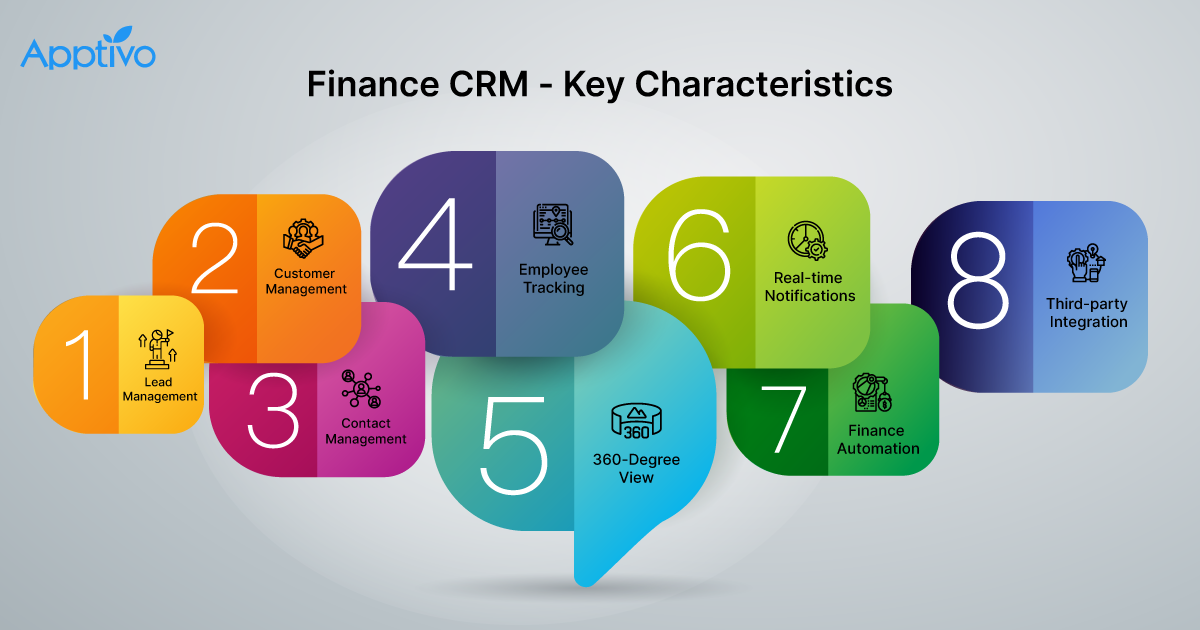
Effective data management and reporting are critical for financial services firms leveraging CRM systems. A robust CRM not only streamlines client interactions but also provides a centralized repository for valuable client data, enabling informed decision-making and regulatory compliance. This section will explore best practices for data security and privacy, the design of a comprehensive reporting dashboard, and the utilization of CRM data for regulatory compliance.
The importance of secure and private data handling within a financial services CRM cannot be overstated. Client information is highly sensitive, and breaches can have severe consequences, including financial losses, reputational damage, and legal repercussions. Implementing robust security measures is paramount to maintaining client trust and adhering to regulatory requirements.
Data Security and Privacy Best Practices in Financial Services CRM
Implementing robust security measures requires a multi-faceted approach. The following best practices are crucial for protecting sensitive client data within a financial services CRM:
- Data Encryption: Employ both data-at-rest and data-in-transit encryption to safeguard client information from unauthorized access. This involves encrypting data stored on servers and databases, as well as data transmitted over networks.
- Access Control: Implement role-based access control (RBAC) to limit access to sensitive data based on employee roles and responsibilities. Only authorized personnel should have access to specific client information.
- Regular Security Audits: Conduct regular security audits and penetration testing to identify vulnerabilities and ensure the effectiveness of security measures. This proactive approach helps mitigate potential risks.
- Employee Training: Provide comprehensive training to employees on data security best practices, including password management, phishing awareness, and the importance of data confidentiality. Regular refresher courses are vital.
- Compliance with Regulations: Adhere to all relevant data privacy regulations, such as GDPR, CCPA, and industry-specific regulations like FINRA rules. This ensures legal compliance and protects client data.
- Data Loss Prevention (DLP): Implement DLP tools to monitor and prevent sensitive data from leaving the organization’s controlled environment. This includes monitoring email, file transfers, and other communication channels.
Financial Advisor Reporting Dashboard Design
A well-designed reporting dashboard provides financial advisors with a clear and concise overview of their key performance indicators (KPIs). This allows for quick identification of trends, areas for improvement, and opportunities for growth.
Consider a dashboard visualizing the following:
| KPI | Data Visualized | Insights Gained |
|---|---|---|
| Client Acquisition Cost (CAC) | Line graph showing CAC over time, segmented by acquisition channel | Identify most effective acquisition channels and areas for cost optimization. |
| Average Revenue Per User (ARPU) | Bar chart comparing ARPU across different client segments | Understand which client segments are most profitable and tailor strategies accordingly. |
| Client Retention Rate | Pie chart showing client retention rate over time | Identify factors contributing to client churn and implement retention strategies. |
| Asset Under Management (AUM) Growth | Line graph showing AUM growth over time | Track overall business growth and identify periods of significant growth or decline. |
| Number of Client Meetings | Bar chart showing the number of client meetings per advisor per month | Monitor advisor productivity and identify areas needing support or training. |
CRM Data for Regulatory Compliance Reporting
CRM data plays a crucial role in meeting regulatory compliance requirements within the financial industry. The data stored within a CRM can be used to generate reports needed for audits and regulatory filings. Accurate and readily accessible data is essential for demonstrating compliance.
Examples of regulatory reports generated using CRM data include:
- Client Communication Logs: CRM data can be used to generate reports detailing all communications with clients, ensuring compliance with record-keeping regulations.
- Transaction Reporting: Integration with transaction processing systems allows for the generation of reports on all client transactions, meeting regulatory requirements for transparency and accuracy.
- Anti-Money Laundering (AML) Compliance: CRM data can be analyzed to identify suspicious activity, assisting in AML compliance efforts.
- Know Your Customer (KYC) Compliance: CRM data can be used to track and verify client identities, ensuring KYC compliance.
User Adoption and Training

Successfully implementing a new CRM system in a financial services firm hinges on effective user adoption and training. Without proper training and ongoing support, even the best CRM will underperform. A comprehensive training program is crucial to ensure that employees understand the system’s functionalities and can use it efficiently to improve their daily workflow. This, in turn, leads to increased productivity and better customer service.A well-structured training program should incorporate various learning methods to cater to diverse learning styles.
The program should not simply focus on technical skills but also address the practical applications of the CRM within the context of the financial institution’s specific operations. Continuous reinforcement and support are essential for maintaining high levels of user engagement and preventing the system from becoming underutilized.
CRM Training Program Structure
This example training program spans four weeks and includes various modules designed to progressively build user proficiency. Each module concludes with a practical assessment to gauge understanding and identify areas requiring further attention.
| Module | Duration | Content | Assessment Method |
|---|---|---|---|
| Introduction to the CRM System | 1 day | Overview of the system’s features and benefits, navigation, basic data entry. | Short quiz and practical exercise |
| Contact Management and Data Entry | 2 days | Detailed explanation of contact management features, data entry best practices, data integrity, and import/export functions. | Practical exercise involving data entry and report generation. |
| Sales and Client Relationship Management | 3 days | Focus on utilizing the CRM for sales pipeline management, client communication tracking, opportunity management, and reporting. | Role-playing scenarios and case studies. |
| Advanced Features and Reporting | 2 days | Covers advanced features such as workflow automation, custom reports, and integration with other systems. | Project-based assessment involving the creation of custom reports and workflows. |
| Ongoing Support and Best Practices | 1 day | Open forum for questions and ongoing support, best practices for efficient CRM usage. | Feedback survey. |
Strategies for Improving User Adoption and Engagement
Effective user adoption requires a multi-pronged approach that goes beyond initial training. Continuous engagement and support are crucial for long-term success.
- Champion Program: Identify and empower key users within each department to act as internal champions, providing peer-to-peer support and mentorship.
- Gamification: Introduce friendly competition or reward systems to incentivize CRM usage and data accuracy. For example, awarding points for completed tasks or accurate data entry.
- Regular Feedback Mechanisms: Implement regular surveys and feedback sessions to gather user input and identify areas for improvement in the system or training materials.
- Ongoing Support and Resources: Provide easily accessible resources such as FAQs, video tutorials, and a dedicated support team to address user queries and challenges promptly.
- Integration with Existing Workflows: Ensure the CRM seamlessly integrates with existing workflows to minimize disruption and maximize efficiency. Avoid creating additional steps or processes that could deter users.
- Personalized Onboarding: Tailor the onboarding process to the specific roles and responsibilities of individual users, focusing on features most relevant to their work.
Effective Communication Strategies
Clear and consistent communication is paramount in fostering user adoption.
- Pre-launch Communication: Announce the new CRM well in advance, highlighting the benefits and addressing potential concerns through emails, town hall meetings, and internal newsletters.
- Targeted Training Materials: Develop training materials tailored to different user groups, focusing on their specific needs and responsibilities.
- Regular Updates and Announcements: Keep users informed about new features, updates, and best practices through regular email updates, intranet posts, and short training videos.
- Success Stories and Case Studies: Share examples of how other employees are successfully using the CRM to achieve their goals. This can inspire and motivate others to adopt the system.
- Open Communication Channels: Establish multiple communication channels for users to ask questions, provide feedback, and report issues, such as email, instant messaging, and a dedicated help desk.
Last Recap
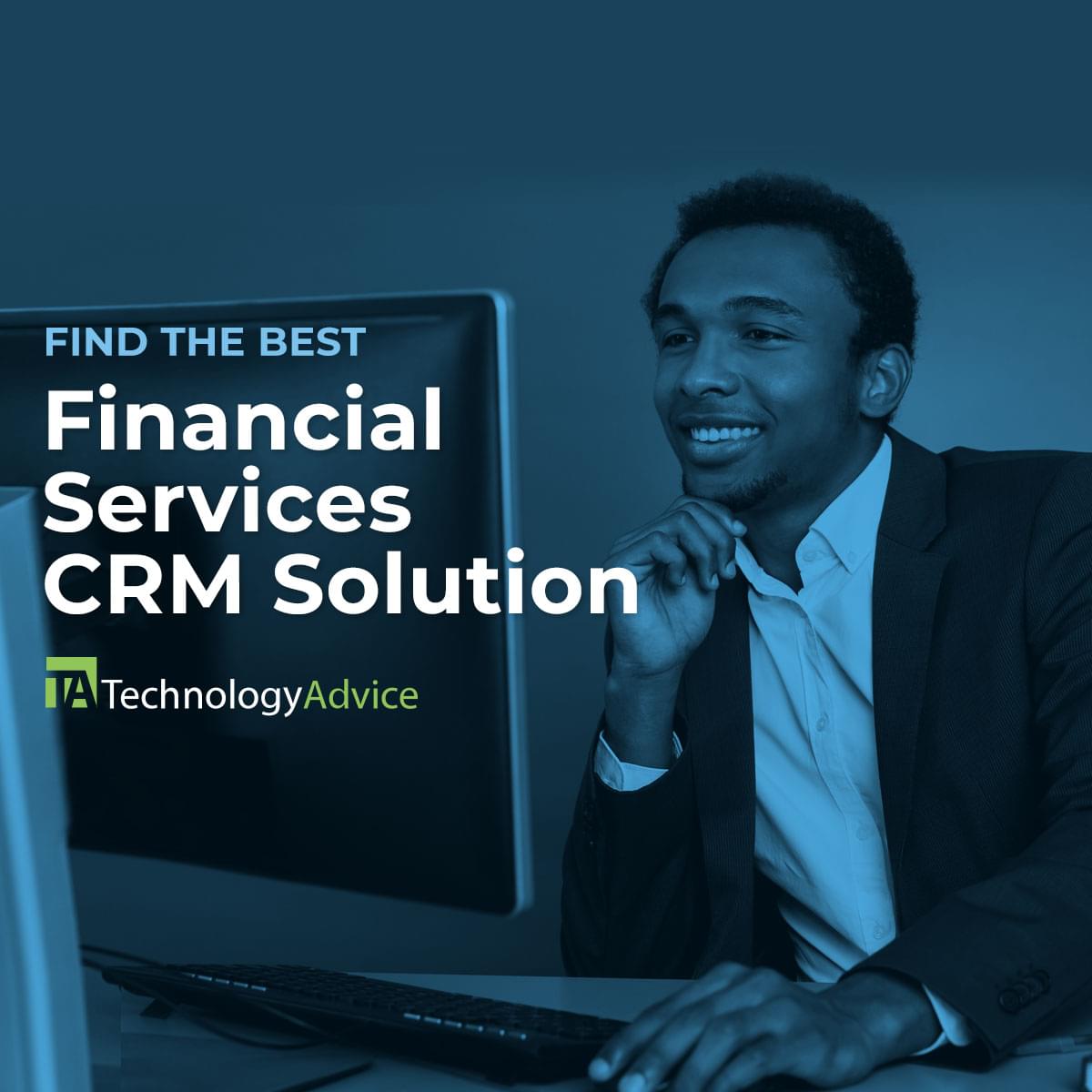
Choosing the best CRM for financial services requires a careful assessment of specific needs and a thorough understanding of the available options. By considering factors such as scalability, security, integration capabilities, and user-friendliness, financial institutions can select a system that not only meets current requirements but also supports future growth and innovation. Effective implementation, coupled with robust training and ongoing support, ensures maximum return on investment and a positive impact on overall business performance.
Popular Questions: Best Crm For Financial Services
What is the average cost of implementing a financial services CRM?
Implementation costs vary greatly depending on the chosen platform, the size of the institution, and the level of customization required. Expect a range from several thousand dollars for smaller firms to hundreds of thousands for larger organizations.
How long does it typically take to implement a financial services CRM?
Implementation timelines typically range from a few months to over a year, depending on the complexity of the project and the resources allocated.
What are the key compliance considerations when selecting a financial services CRM?
Key considerations include GDPR, CCPA, and other relevant industry regulations. The CRM must ensure data security, privacy, and auditability to meet these requirements.
Can a CRM integrate with existing legacy systems in a financial institution?
Yes, most modern CRM platforms offer robust integration capabilities, allowing them to connect with existing systems through APIs and other methods. However, the complexity of integration depends on the age and architecture of the legacy systems.

